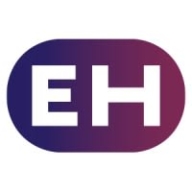

ExtraHop Reveal(x) and LogicMonitor are IT performance monitoring products. ExtraHop is favored for pricing and support, while LogicMonitor is preferred for its robust feature set.
Features: ExtraHop Reveal(x) offers real-time threat detection, advanced packet capture capabilities, and enhanced IT security and visibility. LogicMonitor includes comprehensive integration capabilities, real-time alerts, and advanced data analytics.
Room for Improvement: ExtraHop could enhance its integration capabilities, offer more detailed analytics, and streamline user interface customization. LogicMonitor may improve network security features, reduce complexity in analytics presentation, and provide more flexible pricing options.
Ease of Deployment and Customer Service: ExtraHop provides a straightforward deployment with high-quality customer support, focusing on efficient installation. LogicMonitor offers a cloud-based model that simplifies deployment further, complemented by responsive customer service.
Pricing and ROI: ExtraHop Reveal(x) has competitive setup costs and emphasizes network security, offering strong ROI in threat management. LogicMonitor’s pricing reflects its feature-rich offering and promises long-term ROI through comprehensive monitoring solutions.
| Product | Market Share (%) |
|---|---|
| LogicMonitor | 1.9% |
| ExtraHop Reveal(x) for IT Operations | 0.6% |
| Other | 97.5% |


| Company Size | Count |
|---|---|
| Small Business | 3 |
| Midsize Enterprise | 2 |
| Large Enterprise | 3 |
| Company Size | Count |
|---|---|
| Small Business | 11 |
| Midsize Enterprise | 10 |
| Large Enterprise | 8 |
The ExtraHop Application Performance Management Solution Delivers Unified Visibility Across the IT Environment w/ Proactive Alerts & Accelerated Troubleshooting
LogicMonitor offers flexible IT monitoring with customizable dashboards and robust alerting capabilities. It integrates seamlessly with third-party apps like ServiceNow and provides a single-pane view for diverse IT environments, aiding in proactive issue resolution and enhancing operational efficiency.
LogicMonitor stands out with its capability to monitor diverse infrastructures including Cisco Voice systems, data centers, and virtual environments. Supporting servers, storage, networking devices, and applications, it provides seamless integration with cloud services like AWS and Azure. Users leverage its scalability and flexibility, benefiting from dynamic thresholds, anomaly detection, and detailed visualization. All these features contribute to improved management of IT assets and streamlined operations. Users suggest improvements in mapping, reporting, and automation for remediation, desiring more customizations and an expansive application performance monitoring toolset.
What are LogicMonitor's key features?LogicMonitor is widely implemented across industries, providing monitoring for infrastructure in sectors like telecommunications, cloud computing, and managed services. Managed service providers particularly value its ability to track client environments, deliver proactive alerts, and generate comprehensive reports, while its integration with cloud platforms like AWS and Azure offers users centralized management and visibility into IT assets worldwide.
We monitor all Network Monitoring Software reviews to prevent fraudulent reviews and keep review quality high. We do not post reviews by company employees or direct competitors. We validate each review for authenticity via cross-reference with LinkedIn, and personal follow-up with the reviewer when necessary.